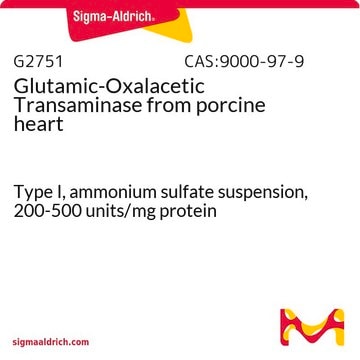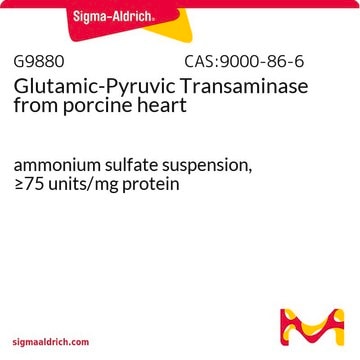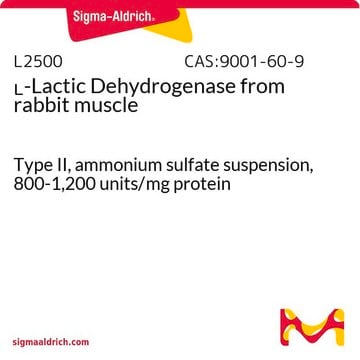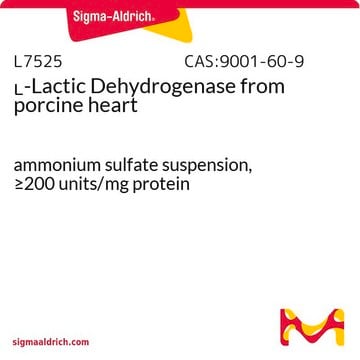G8255
Glutamic-Pyruvic Transaminase from porcine heart
lyophilized powder, ≥75 units/mg protein
Synonym(s):
L-Alanine: 2-Oxoglutarate Aminotransferase, Alanine Aminotransferase (catalytic concentration), GPT
About This Item
Recommended Products
biological source
Porcine heart
form
lyophilized powder
specific activity
≥75 units/mg protein
composition
Protein, 75-95%
technique(s)
cell culture | mammalian: suitable
color
light yellow to yellow
foreign activity
L-glutamic dehydrogenase, lactic dehydrogenase and malic dehydrogenase ≤0.01%
glutamic-oxalacetic transaminase ≤0.1%
storage temp.
−20°C
Looking for similar products? Visit Product Comparison Guide
General description
Research area: Cell Signaling
Application
- in the transamination assay with a racemic mixture of synthetic 3-methyl-2-oxoglutarate
- to remove glutamate from the cell culture medium used for culturing human embryonic kidney (HEK293) cells
- in the lactate-dehydrogenase (LD)-coupled alanine transaminase (ALT) reaction kinetic studies
Biochem/physiol Actions
Unit Definition
Physical form
Storage and Stability
persons
Analysis Note
Signal Word
Danger
Hazard Statements
Precautionary Statements
Hazard Classifications
Resp. Sens. 1
Storage Class Code
11 - Combustible Solids
WGK
WGK 3
Flash Point(F)
Not applicable
Flash Point(C)
Not applicable
Personal Protective Equipment
Certificates of Analysis (COA)
Search for Certificates of Analysis (COA) by entering the products Lot/Batch Number. Lot and Batch Numbers can be found on a product’s label following the words ‘Lot’ or ‘Batch’.
Already Own This Product?
Find documentation for the products that you have recently purchased in the Document Library.
Customers Also Viewed
Our team of scientists has experience in all areas of research including Life Science, Material Science, Chemical Synthesis, Chromatography, Analytical and many others.
Contact Technical Service











